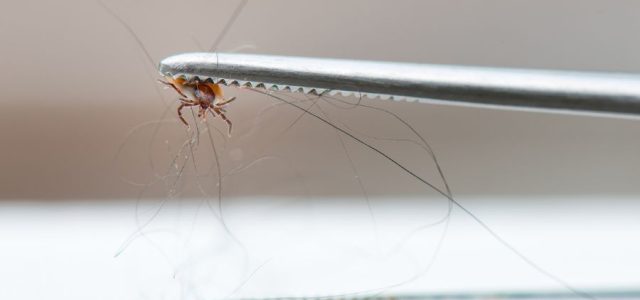Call for your appointment today 914-666-4665 | Mt. Kisco, New York

If you’ve been told you’re safe from Lyme disease if you remove a tick within 36 hours, you’ve heard the 24 – 36 hour tick bite myth. This belief is often publicized in brochures, websites, and even at medical conferences.
The problem? The science shows it’s not always true and relying on it can delay diagnosis and treatment.
Why the 24–36 Hour Tick Bite Myth Exists
The 24–36 hour tick bite myth comes from early lab studies suggesting Borrelia burgdorferi usually takes more than a day to move from a tick’s midgut to its salivary glands. But these are averages—not guarantees—and real-world conditions can speed up transmission.
In fact, research in mice has shown that some ticks can transmit Borrelia in under 24 hours (Piesman et al., 1987). Other studies found that partially fed ticks can transmit almost immediately (Shih & Spielman, 1993).
Additionally, some documented patient cases have shown that Lyme disease can occur even when a tick has been attached for less than 24 hours. (Eisen, 2018; Shapiro et al., 1992). People often underestimate attachment time with ticks feeding unnoticed for hours before they are discovered by the individual. (Eisen & Dolan, 2016; Falco & Fish, 1988).
“A tick doesn’t need a day and a half to change your life.”
Co-Infections Make the Risk Higher
It’s important to be aware that some pathogens can be transmitted in under 24 hours —and in certain cases, within just a few hours.
- Anaplasma phagocytophilum (Anaplasmosis) – less than 24 hours. (Des Vignes et al., 2001)
- Babesia microti (Babesiosis) – possibly within 24 hours.
- Rickettsia rickettsii (Rocky Mountain spotted fever) – transmission within hours.
- Ehrlichia chaffeensis / Ehrlichia ewingii (Ehrlichiosis) – possibly within 24 hours.
- Borrelia miyamotoi (relapsing fever group) – Some studies suggest faster transmission than Borrelia burgdorferi.
- Powassan virus – transmitted within minutes to several hours.
Why This Myth Is Dangerous
Believing the 24–36 hour tick bite myth can lead to:
- Declining use of prophylactic antibiotics
- Stopping symptom monitoring
- Ignoring early signs of infection
A Better Approach
Every tick bite should be taken seriously. Your risk depends on factors like the type of tick, its life stage, how engorged it is, and whether it may have fed on another host before you.
The science is clear: a tick doesn’t always need 36 hours to cause trouble — sometimes, it needs far less.
References:
-
Piesman J, Mather TN, Sinsky RJ, Spielman A. Duration of tick attachment and Borrelia burgdorferi transmission. J Clin Microbiol. 1987;25(3):557–558.
-
Shih CM, Spielman A. Accelerated transmission of Lyme disease spirochetes by partially fed vector ticks. J Clin Microbiol. 1993;31(11):2878–2881.
-
Shih CM, Pollack RJ, Telford SR, Spielman A. Delayed dissemination of Borrelia burgdorferi from the midgut of Ixodes dammini to the salivary glands. J Infect Dis. 1992;166(4):827–831.
-
Des Vignes F, Piesman J, Heffernan R, Schulze TL, Stafford KC, Fish D. Effect of tick removal on transmission of Borrelia burgdorferi and Anaplasma phagocytophilum by Ixodes scapularis nymphs. J Infect Dis. 2001;183(5):773–778.
-
Eisen L. Pathogen transmission in relation to duration of attachment by Ixodes scapularis ticks. Ticks Tick Borne Dis. 2018;9(3):535–542.
-
Eisen L, Dolan MC. Evidence for the rapid transmission of pathogens by ticks. Ticks Tick Borne Dis. 2016;7(6):1065–1075.
-
Falco RC, Fish D. Ticks parasitizing humans in a Lyme disease endemic area of southern New York State. Am J Epidemiol. 1988;128(5):1146–1152.
-
Shapiro ED, et al. A controlled trial of antimicrobial prophylaxis for Lyme disease after deer-tick bites. N Engl J Med. 1992;327(24):1769–1773.




Nymphs may be able to transmit faster than adults – within 12 hours.
A study on the speed of transmission by infected ticks, Research Journal, Institut Pasteur 2018-09-07: https://www.pasteur.fr/en/research-journal/news/lyme-disease-study-speed-transmission-infected-ticks
MY EXPERIENCE:
The tick was on my hand and I saw it immediately after petting my dog. I removed it promptly. Called my dermatologist who had prescribed doxycycline for a previous tick bite. He said he couldn’t prescribe doxycycline every time I was bitten by a tick. This happened over 20 years ago.
Of course, I got very sick and consequently spent several years overcoming all of the ramifications of that non-treatment stance.
Luckily after getting very ill, I found you, Dr. Cameron! You prescribed all of the right treatments including intravenous antibiotic for several months.
You gave me my life back and I am forever grateful to you.
Thank you for giving everyone the information they need to overcome the lack of real treatment possibilities for Lyme disease. I wish more medical people were like you and did not just repeat all of the misinformation about Lyme disease that is out there and actually thought about what really happens. And realized how much is not known.
MY COMMENT STOPS HERE AND IS WRITTEN JUST FOR YOU, DR. CAMERON.
TO YOU, DR. CAMERON,
I am commenting on this article because in my experience the idea the tick must be embedded for 24 hours, or 12 hours or even 1 hour is completely false and has probably damaged many people.
I wish to remain anonymous, so will not give you my real name though you may figure it out.
Though I don’t expect to hear from you, I am giving you an unidentifiable email address in case you do decide you want to ask me something.
(Also, there aren’t any asterisks marking required fields though it is stated…Required fields are marked *)
The tick that bit me was attached for three hours at the most, and it transmitted FIVE diseases!